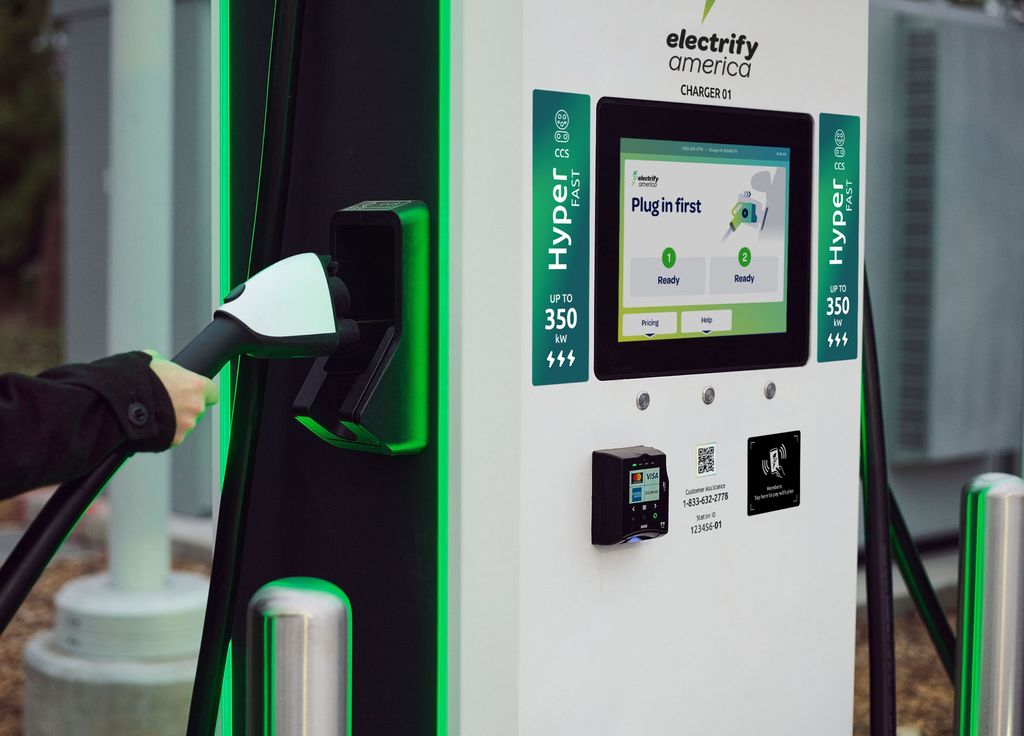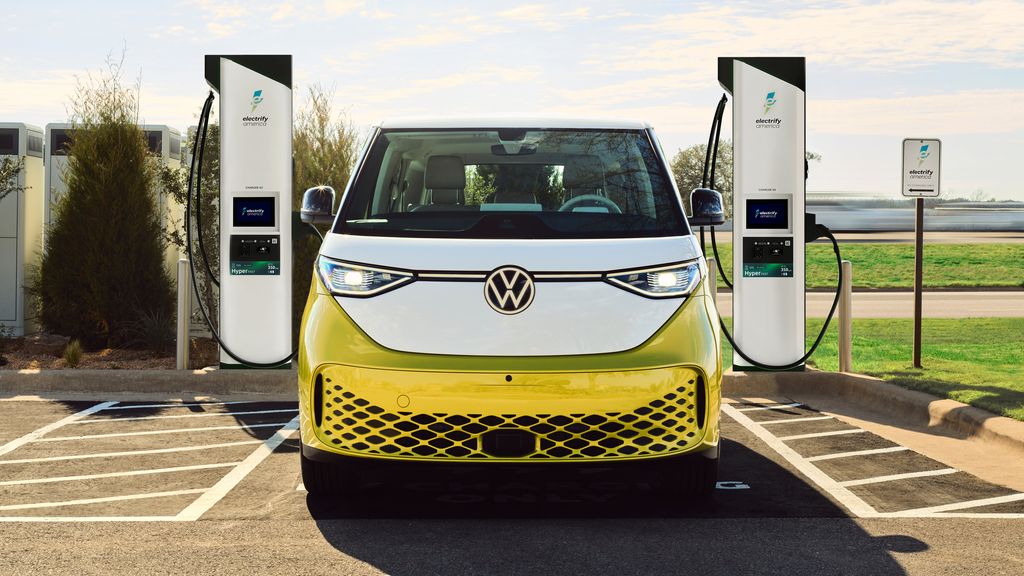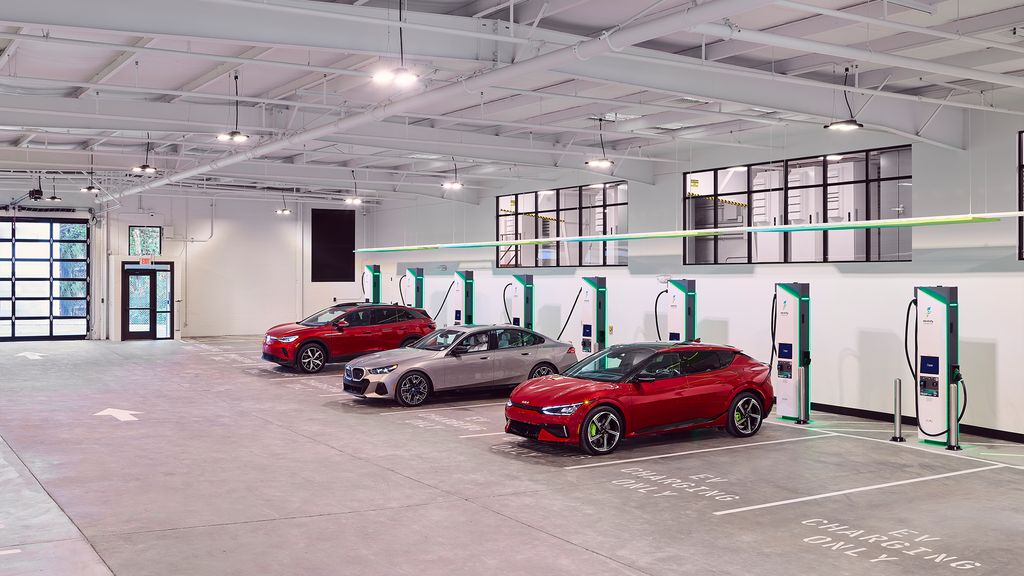Why is the electrification of America slow
Within a few short months, President Donald Trump and his congress controlled by the Republican threw a hole in the growth of electric vehicles. Given that EV tax loans have been gradually discarded and the order of the tail emissions on the blocking block, we will see much less electric cars in the coming years than expected.
This radically shifted Outlook had the ripple throughout the industry Eva, with car makers from Honda to Nissan canceled or delayed new models. But so far there is one clear place: despite everything, the rapid construction of EV fast chargers does not leave all over the country.
To get an idea of how one of the large EV charging countries is dealing with this current moment, I called UP Electrify American for sale and marketing, Rachel Moses.
Bottom line? Despite some very real obstacles and a lot of noise, Electrify America do not forgive the brake to its expansion plans one piece.

Electrify America says that the pace of building does not change despite the challenging market ev.
Photo: Electrify America
“Even though we are at this strange time when there are industrial heads, it’s also a really exciting time,” Shet told me. “Although there are changes in the market, it is not harmful, to the extent that the noise is out there.”
Electrify America is not alone to keep her leg on the accelerator. The US is on the way to put 16,700 new public chargers into the country this year, according to the Paren charging company, a new record and about 20% profit compared to last year’s commitment. During the first half of this year, the charging network opened about 1,500 new places
This is victory for the current and future owners of ev. Concerns concerning access to charging infrastructure have constantly retain the wider acceptance of ev. More stations and plugs could help make more Americans to perform the switch – especially those who do not have a garage.

EV sales will constantly grow and create a dequest for its charging stations, says the company.
Photo: Electrify America
And these are the new buyers who devote self -confidence in Electrify the American Growth Strategy.
Although EV sales are growing so fast in the next few years, ASY could have previous political environment, millions of other electric cars will reach the journey. These people will ask more and more charging options.
“America, one company, one company, will not meet this demand. So I do not think in all of us that there is a respiratory room,” she said. “I think we all have to make sure we are investing to close this gap and maintain our growth pace.”
The forecast of the EV market growth is not “so aggressive” in the next 2-3 years, but it will raise it, Shet told me. The last few years have also indicated what the future pays for demand for charging.
Over the past 18 months, EV sales growth decreased because the adoptivers soon retreated more to more hudders. The sale of US EV increased by a modest 7% in 2024 to hit 1.3 million units after shooting 46% in 2023. Yet America electrifies that in 2024 it released more than 600 gigawatts of energy, a year -on -year increase of 65%. Last year it recorded 16 million charging sessions, out of 11 million in 2023.
“What we see can still see that it still includes. And this is a reflection of the vehicle’s attraction, the volume of vehicles that are still sold,” Moses said.

Electrify America focuses on building larger stations in urban areas.
Photo: Electrify America
What about the National Infrastructure Program of Electric Vehicles or Nevi? This $ 5 billion project, which has passed under the administration of Biden, finances building fast chargers along highways. Then the Trump administration came and stiffened the funds of the month and threw the program in chaos. In June, he ordered the federal judge of DOT to release funds after 16 defendants of the states. It’s still in the legal limbo.
According to Moses Electrify America, she won some money, mostly on behalf of her commercial customers, who do everything. “For the most part,” he says, these projects receive funds that have been amazed. Most of their own projects financed by NEVI companies are also ongoing, although there is “a little uncertainty”.
It is said that it is not nice to have financing, but it does not even do for an electric business.
“We still want to see that the money is assigned and spent on these projects, but federal incentives themselves are not what our business is based on,” Shet told me. “So he had a direct negative consequence on our long and our business model and how to continue the great -grandfather and expansion.” (Certainly, some smaller startups on charging EV have a greater impact on Trump’s financial cuts and freezing, as Messages about the heat map reported this week.)
So what exactly do fees look like, which growth and expansion?
After initially focused on the construction of motorways after launching in 2017, Electrify America is now resetting larger stations in urban areas. This means at least 10 chargers to the web – attractive to some smaller ones that are already evolving – to help the alviate lines that are formed at some of the busiest stations.
He also invests in the modernization of old hardware, which Moses says is not related to sniffing and contributed to the commitment. It has been replaced around 1,800 over the past 18 months. And it begins to expand its stations using North American charging standard or NACS, a Tesla-DESIGEND charging plug that becomes an industry standard.
The company now has two stations with NACS connectors: one in Florida and one in Connecticut. It evaluates the customer’s experience and get a sense of car plans for models equipped with NACS before deciding where to install plugs elsewhere and how to do it quickly.
“We are determined to accept the standard. This perspective is not concerned,” she said. “It’s about how we put it on and on what scale, when.”
There are nothing sneezing in front of the EV industry. But for Moses, a 16 -year -old veteran of space, they are not a brand new Eith.
“We have seen these rise and falls in this industry over the past 15, 20 years, if it was a commercialized industry,” she said.
Contact the author: Tim.levin@insideevs.com
(Tagstotranslate) interview
